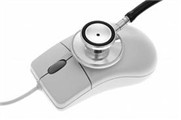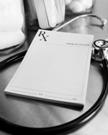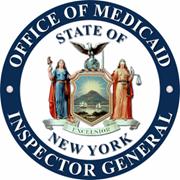May 2011 Volume 27, Number 6
New York State Medicaid Update
The official newsletter of the New York Medicaid Program
Andrew M. Cuomo, Governor
State of New York
Nirav R. Shah, M.D. Commissioner
New York State DOH
Jason A. Helgerson, Medicaid Director & Deputy Commissioner
Office of Health Insurance Programs
In this issue....
POLICY AND BILLING GUIDANCE
Medicaid Begins Coverage for Hospital Emergency Room Observation Services
Procedure Code and Modifier Requirements when Submitting Claims to Both Medicare and Medicaid
Medicaid Reimbursement Rates for Smoking Cessation Counseling (SCC)
SPARCS Expanded Outpatient Data Collection Program Update
Attention Ambulance Providers: Report Enrollee Abuse of Emergency Medical Services
Revised Ambulette Transportation Fees Implemented by the Medicaid Redesign Team
Attention Dental Providers: New Policy and Procedure Manual and Fee Schedule Available
PHARMACY UDATES
Clinical Drug Review Program (CDRP) Fax Options and Requirements
Preferred Drug Program (PDP) Update
Medicaid Benefit Changes for Durable Medical Equipment, Prosthetics, Orthotics and Supplies (DMEPOS)
Medicaid Drug Rebate Program Update
ALL PROVIDERS
Medicaid Begins Coverage for Hospital Emergency Room Observation Services
Return to Table of Contents

Effective April 1, 2011, New York State Medicaid, including Medicaid managed care and Family Health Plus (FHPlus) plans, will provide separate payment in certain situations for hospital observation services provided in a distinct observation unit, in addition to payment for the emergency room medical visit. Payment will be made under Ambulatory Patient Group 450 (APG). Medicaid payment for observation services is limited to patients who are seen, evaluated and admitted to the Observation Unit via the hospital's emergency service and for whom a diagnosis and a determination concerning admission, discharge or transfer cannot be accomplished within eight hours of admission to observation status, but can reasonably be expected within 24 hours. In order to be reimbursed for observation services, a patient must be in observation status for a minimum of eight hours (with clinical justification). This is in addition to any time that the patient spent in the Emergency Room prior to admission to the observation unit. Hospitals may bill up to 24 hours of observation services, at which time the patient must be admitted as an inpatient or discharged. Medicaid will not reimburse for direct admits to observation (CPT/HCPCS code G0379).
The Department of Health is in the process of adopting regulations governing the operation of Observation Units. In the interim, to obtain Medicaid payment for such observation services, facilities must have a waiver approved by the Office of Health Systems Management (OHSM), Division of Certification and Surveillance (to initiate this process, please contact OHSM staff at 518-402-1003). Waivers are issued on a site specific basis. The OHSM waiver criteria are listed at the end of this article. Medicaid will not reimburse for observation services provided at hospital facilities that have not received a Department of Health waiver to provide such services.
The following Medicaid payment policy and reimbursement criteria will apply concerning Medicaid payment for observation services in an observation unit. Required documentation for Medicaid payment for observation unit services includes:
- a clinical justification for observation status;
- a working diagnosis;
- any tests or treatments administered while the patient is in observation status;
- progress notes by a responsible Physician, PA or NP; and
- final disposition of the patient from the observation unit.
-

Billing Guidelines and Requirements
Observation services should be billed under APG rate code 1402 and CPT/HCPCS code G0378 (hospital observation service, per hour). The number of hours in observation status must be coded in the units of service field of the claim line on which G0378 is coded. The appropriate CPT/HCPCS codes for all ancillary services provided to the patient while in observation status should also be reported on the claim. Facilities should code G0378 only when the length of stay in the observation unit is for 8 or more hours. If the length of stay in the observation unit is less than 8 hours, the observation portion of the stay is not reimbursable by Medicaid and the observation code should not be reported on the APG claim.
Only those hours that the patient is actually in the observation unit may be billed with G0378. Significant procedures or high intensity ancillaries (MRI, PET scans, CT scans) will cause G0378 to package, meaning it will not be paid separately. Low level ancillaries (X-rays, laboratory tests) and drugs will not cause G0378 to package and observation will be paid separately.
Observation unit services end when the patient is admitted as an inpatient, or is discharged from the hospital. If the patient is admitted to inpatient status, only the inpatient admission may be submitted for payment and the emergency room services and associated observation services should not be billed to Medicaid. If the patient must be transferred to another facility, the emergency room and observation services may be submitted for payment.
Managed care organizations (MCOs) may choose to utilize a criteria-based assessment tool for determining whether the observation stay is medically necessary. Approval of observation services may be subject to either prior authorization or a retrospective review process
Observation Services Billing Examples
Hours in ED Hours in
Observation UnitProvider Billing 3 hours 6 hours Payment for ED visit only - do not report observation services on the APG claim. 3 hours 9 hours Payment for ED visit and Observation (9 units) 8 hours 24 hours Payment for ED visit and Observation (24 units) 8 hours 4 hours Payment for ED visit only - do not report observation services on the APG claim.
Note: Medicare's payment policy for observation services is different than that utilized by Medicaid. Nevertheless, Medicaid will continue to reimburse the Medicare Part B coinsurance amounts (to the extent permitted by State statute) for dually-eligible recipients.
Questions? Please call the Division of Financial Planning and Policy at (518) 473-2160 for any additional information or questions about Medicaid coverage policy for observation services.
EMERGENCY DEPARTMENT OBSERVATION UNIT SERVICES
Application and Review Criteria For Regulatory Waiver of Eight-Hour ED Length of
Stay Limitation for Patients Assigned to Observation Units
The application must include a summary of the program proposed, that includes:
- Program goals and objectives for the observation unit, which must include use of the unit only for observation, diagnosis and stabilization of those patients for whom diagnosis and a determination concerning admission, discharge, or transfer cannot be accomplished within eight hours, but can reasonably be expected within twenty-four hours.
- Clinical Criteria/Indicators for Assignment and Discharge/Exclusion Criteria.
- Clear Statement/Description of Oversight and Accountability, which must provide for:
- a. Organization of the observation unit under the direction and control of the Emergency Service;
- b. The integration of the observation unit and its services with the emergency service and other related services of the hospital; and
- c. Medical staff adoption of policies and to assure appropriate use of the observation unit
- Description of the Physical Space, which must include:
- a. The size and location of the unit and number of beds. The total number of observation unit beds in a hospital shall be limited to five percent of the hospital's certified bed capacity, and shall not exceed forty, provided that in a hospital with less than 100 certified beds, an observation unit may have up to five beds.
- b. A distinct physical space separate from the rest of the emergency service, except in a hospital designated as a critical access hospital pursuant to subpart F of part 485 of Title 42 of the Code of Federal Regulations or a sole community hospital pursuant to section 412.92 of Title 42 of the Code of Federal Regulations or any successor provisions.
- c. Whether or not construction is required, a certification from a licensed architect or engineer' in a form specified by the Department, that the space complies with the applicable provisions of Parts 711 and 712-2 and section 712-2.4 of 10 NYCRR (Chapter 2.2, "Specific Requirements for General Hospitals," of Part 2, "Hospitals," of Guidelines for Design and Construction of Health Care Facilities, 2010 edition).
- d. To the extent that construction is required for the observation unit, compliance with Part 710 of 10 NYCRR.
- Defined staffing plan that:
- a. Provides for staff appropriately trained and in sufficient numbers to meet the needs of patients in the observation unit;
- b. At a minimum, provides for oversight of the medical care of the patients assigned to the observation unit by a physician, nurse practitioner, or physician assistant. The physician, nurse practitioner, or physician assistant assigned to oversee the observation unit must be immediately available to meet the needs of patients in the observation unit and must not be assigned concurrent duties that will interfere with such availability.
- Quality Review/Improvement Activities -- to be established by hospital, but may include:
- a. Tracking inpatient admissions from the observation unit;
- b. Reducing returns to the ED;
- c. Reducing any hospital admissions within 7 days of discharge from the observation unit;
- d. Sample chart reviews/review of all deaths following an observation unit stay;
- e. Patient satisfaction/assessment tool.
- Hospitals operating observation units pursuant to waivers granted by the Department prior to May 1, 2011, may continue to operate those units consistent with the terms of their waivers.
Procedure Code and Modifier Requirements when Submitting Claims to Both Medicare and Medicaid
Return to Table of Contents

When billing Medicaid for a service reimbursed by Medicare, the provider NPI, procedure code, all modifiers
and dates of service should appear exactly the same on the claim to Medicaid as on the Medicare claim.
Any claim indicated by Medicare as a crossover to Medicaid (MA 18 - NY Medicaid) should not be submitted by the provider to Medicaid as a separate claim. If, however, the Medicare remittance does not indicate the claim has been crossed over to Medicaid, the provider should submit the claim directly to Medicaid.
Direct submission to Medicaid is also allowed under Medicaid claim adjustment scenarios related to crossover claims that were initially submitted to Medicare, for example:
- If a provider initially bills multiple claim lines to Medicare, and Medicare pays one or more lines, but denies the others, the paid line(s) will be crossed over to Medicaid. To add the unpaid line, the provider must resubmit the crossover payment as an adjustment to Medicaid.
- Crossover claims can be adjusted/replaced by the provider by submitting the adjusted claim directly to New York Medicaid following the usual Medicaid adjustment process.
If provider claims are changed from a Medicare claim to Medicaid, providers must file an adjusted claim with Medicaid. The adjusted claim should report the same procedure code and modifier as billed to Medicare, to ensure proper processing and reimbursement
Also, providers must bill Medicaid with the same procedure codes and modifiers in the same sequence as was billed to Medicare to obtain the correct coinsurance payment, either full coinsurance or 20 percent of coinsurance
Please see the March 2008 Medicaid Update for additional information at:
http://www.health.state.ny.us/health_care/medicaid/program/update/2008/2008-03.htm#med.Questions? Please contact (518) 402-1934.
Medicaid Reimbursement Rates for Smoking Cessation Counseling (SCC)
Return to Table of Contents
Effective April 1, 2011, Medicaid expanded coverage of SCC to all Medicaid beneficiaries. Each Medicaid beneficiary will be allowed a total of six counseling sessions during any twelve continuous months which must be provided on a face-to-face basis. SCC complements the use of prescription and nonprescription smoking cessation products. These products are also covered by Medicaid.
The following Medicaid fee-for-service rates apply to SCC.
| CPT Procedure Code | Office-Based Practitioners | Article 28 Clinics (that bill APGs) |
|---|---|---|
| 99406 - Intermediate SCC, 3 to 10 minutes. Billable only as an individual session. |
$10.00 | OPD - $20.00 D&TC - $17.00 (Approximate statewide averages.) |
| 99407 - Intensive SCC, greater than 10 minutes. Billable as individual or group* session. |
$19.00 - Individual SCC $ 9.50 - Group* SCC |
OPD - $20.00 $10.00 - Group* D&TC - $17.00 $ 8.50 - Group* (Approximate statewide averages) |
*Group SCC sessions, with up to eight patients in a group, became reimbursable May 1, 2011, for officebased practitioners, and will become effective July 1, 2011, for Article 28 clinics (that bill APGs). All group sessions must be identified with the HQ modifier. All SCC claims must include the ICD-9 diagnosis code 305.1 - Tobacco Use Disorder.
Please refer to the April 2011 Medicaid Update for additional information regarding the smoking cessation counseling benefit at: http://health.ny.gov/health_care/medicaid/program/update/2011/2011-04.htm#exp.
Questions regarding SCC billing? Please contact the eMedNY Call Center at (800) 343-9000.
Policy questions? Please contact the Division of Financial Planning and Policy at (518) 473-2160.
SPARCS Expanded Outpatient Data Collection Program Update
Return to Table of Contents
On April 12, 2006, Section 2816(2)(a)(iv) of the Public Health Law was amended to authorize the collection of outpatient clinic data from all licensed Article 28 general hospitals and diagnostic and treatment centers (D&TCs) operating in New York State. The April 2011 Medicaid Update notified providers of outpatient services of the phased approach being undertaken to implement the Expanded Outpatient Data Collection (EODC) program.
The first phase, beginning July 1, 2011, will focus on data collection from hospital outpatient departments; the second phase, estimated to begin January 2013, will include outpatient services providers that are affiliated with a hospital that already reports data to SPARCS; and the third phase, currently with no established implementation time-frame, will include those non-hospital affiliated sites (D&TCs) not currently required to report to SPARCS.
First phase providers will begin submitting claims data that meets the 95 percent compliance requirement currently found in SPARCS regulations, on July 1, 2011, according to the following timelines:
- Data for January, February, March, April, May, and June 2011, must be submitted by September 30, 2011.
- Data for July, August, and September 2011, must be submitted by November 30, 2011.
- Data for October, November, and December 2011, must be submitted by February 29, 2012.
For all providers, data submissions for January 1, 2012, onward will follow the 60-day submission requirement as predicated in SPARCS regulations. This timeline will allow providers to accommodate the large amount of data initially being submitted while also blending submissions into the current regulation requirements.
Please visit the DOH Web site at: http://www.health.state.ny.us/statistics/sparcs/sysdoc/eodc.htm for EODC FAQs, data specifications contained in the X12-837 Input Data Specifications 2011 document, and listings of Phase I and Phase II facilities.
Questions? Contact Charles Fontenot at (518) 473-8822 or Laura Dellehunt at (518) 473-8144.
Attention: Ambulance Providers
Report Enrollee Abuse of Emergency Medical Services
Return to Table of Contents

Governor Cuomo's Medicaid Redesign Team (MRT) have identified ways to provide critical health care services at a lower cost, and have recommended a series of proposals to fundamentally restructure and reform the New York State Medicaid program. MRT Proposal #29 to reduce transportation costs contained a number of targeted actions to achieve savings, including intervention with ambulance "frequent fliers."
Per New York State Penal Code Section 240.50(2), it is a Class A Misdemeanor to report an emergency where none exists. Therefore, if you suspect that an enrollee is abusing ambulance services, please forward the following information to the Medicaid Transportation Policy Unit via email to MedTrans@health.state.ny.us or telephone to (518) 473-2160:
- the Medicaid enrollee's name and Medicaid identification number if available, and
- circumstances about the perceived abuse.
The Medicaid Transportation Policy Unit will catalogue the referral, analyze the transportation claim reports of each Medicaid enrollee, respond to the reports and intervene with the Medicaid enrollee as determined necessary.
Meanwhile, the Medicaid Transportation Policy Unit:
- has identified about 900 enrollees whose use of emergency ambulance services appeared significant in calendar year 2010;
- sent each identified enrollee a letter informing him or her that reporting an emergency where none exists is a punishable offense and that he or she must meet with the local transportation staff (be it county staff or staff of a transportation manager) to discuss his or her transportation needs;
- has notified local department of social services staff of ambulance users in their county;
- will establish an alternative source of transportation for these enrollees to call if urgent medical care is necessary but there is no need for ambulance transportation; and
- will continue to track the future emergency transportation use by these enrollees.
Recent media reports describe the frustration of ambulance service providers when Medicaid enrollees dial 911 in non-emergency situations in order to get a ride to the hospital. These inappropriate calls reduce the availability of emergency responders for true emergencies that may arise, expend staff time and medical supplies, and pose undue risk of operating an emergency response vehicle.
It is the Department's intent to guide these enrollees to more appropriate modes of transportation, while maintaining their right to seek emergency ambulance service when needed. With continuing intervention, enforcement and education, we will provide necessary emergency transportation, while maintaining the fiscal and programmatic integrity of Medicaid emergency services.
The Office of the Medicaid Inspector General's Recipient Fraud Unit will investigate referrals made by the Medicaid Transportation Policy Unit and, where appropriate, forward the information to the local district attorney for possible prosecution.
Questions? Please contact the Medicaid Transportation Policy Unit at (518) 473-2160 or via email to MedTrans@health.state.ny.us
Revised Ambulette Transportation Fees Implemented by the Medicaid Redesign Team
Return to Table of Contents
Governor Cuomo's Medicaid Redesign Team (MRT) has identified ways to provide critical health care services at a lower cost, and recommended a series of proposals to fundamentally restructure and reform the New York State Medicaid program.
MRT proposal #29 concerning Medicaid transportation program initiatives contains targeted fee actions that include a reduction of the amount paid for ambulette transportation. The new fees, depicted in the chart below, are effective July 1, 2011:
| County |
One Way Trip | July 1, 2011 Fee |
|---|---|---|
| New York City | Dialysis transportation: 5 miles or less | $27.00 |
| New York City | Dialysistransportation: over 5 miles | $30.00 |
| New York City | All other ambulette transportation: 5 miles or less | $29.00 |
| New York City | All other ambulette transportation: over 5 miles | $34.70 |
| Nassau &Suffolk | Dialysis transportation | $40.00 |
| Nassau &Suffolk | All other ambulette transportation | $48.50 |
| All Other Counties Statewide |
All ambulette transportation | All trip unit ambulette fees reduced by $1.50 |
| Statewide | Ambulette mileage fee | No Change |
The table below illustrates the new procedure codes for dialysis transportation in New York City. Ordering practitioners must submit new orders for ambulette transportation of New York City Medicaid enrollees for dates of service or after July 1, 2011.
| County | One Way Trip | Procedure Code | Modifier | Description |
|---|---|---|---|---|
| 66-New York City | $27.00 | A0130 | AX | All trips to dialysis within 5 miles |
| 66-New York City | $30.00 | A0130 | SC | All trips to dialysis over 5 miles |
Questions? Please contact the Medicaid Transportation Policy Unit via email at:MedTrans@health.state.ny.us
Attention: Dental Providers
New Policy and Procedure Manual and Fee Schedule Available
Return to Table of Contents
The updated dental policy and procedure manual and fee schedule for dates of service on or after May 15, 2011, are now available. Please visit: http://www.emedny.org/ProviderManuals/Dental/index.html.
A paper copy may also be obtained by calling the eMedNY Call Center at (800) 343-9000 (menu options #1 and #4).
Questions? Please contact the Division of Provider Relations and Utilization Management, Dental Prepayment Review Unit at (800) 342-3005 (menu option #2), or (518) 474-3575 (menu option #2).
Attention: Medicaid and Family Health Plus Prescribers
Clinical Drug Review Program (CDRP) Fax Options and Requirements
Return to Table of Contents

The mission of the CDRP is to ensure that specific drugs are utilized in a medically appropriate manner. Drugs and drug classes subject to the CDRP require prior authorization (PA) since there may be safety issues, public health concerns, the potential for fraud and abuse, or the potential for significant overuse and misuse.
All PA requests for drugs subject to the CDRP may be initiated by calling the Clinical Call Center (CCC) at (877) 309-9493. In some cases, it may be necessary to fax specific clinical information to the CCC before a PA number is issued. For some drugs, PA requests can be initiated by fax. The table below provides a summary of the fax options and requirements for the drugs and drug classes subject to the CDRP:
| Drugs/Drug Classes subject to CDRP |
PA request must be initiated by phone |
PA request can be initiated by fax |
Additional faxed documentation will be required |
Additional faxed documentation may be required |
|---|---|---|---|---|
| Abstral® | X | |||
| Actiq®/fentanyl citrate oral lozenge | X | |||
| Adcirca®^ | X | X | ||
| Fentora® | X | |||
| Growth Hormones (for enrollees 21 years of age and older)*^ |
X | X | ||
| Lidoderm® | X | X | ||
| Onsolis | X | |||
| Regranex | X | X | ||
| Revatio®^ | X | X | ||
| Serostim®^ | X | X | ||
| Synagis®^ | X | |||
| Topical Immunomodulators (Elidel, Protopic)* |
X | |||
| Xyrem®^ | X | X | ||
| Zyvox®^ | X | X |
^ -PA request must be initiated by the prescriber. *Drug classes are also subject to the Preferred Drug Program (PDP). For a listing of preferred medications in these classes, please visit: https://newyork.fhsc.com/downloads/providers/NYRx_PDP_PDLquicklist.pdf. CDRP worksheets and fax forms are available online at: https://newyork.fhsc.com/. All CDRP fax forms and documentation must be sent to the CCC at (800) 268-2990.
Attention: New York State (NYS) Medicaid and Family Health Plus Providers
Preferred Drug Program (PDP) Update
Return to Table of Contents
Effective May 4, 2011,pantoprazole has been changed to preferred status in the Preferred Drug List "Proton Pump Inhibitors (PPIs)" therapeutic drug class and will no longer require a prior authorization.
The following drugs are preferred in the PPI category:
- Nexium®(capsule)
- omeprazole OTC
- omeprazole Rx
- pantoprazole
- Prilosec®
For a complete listing of preferred and non-preferred medications subject to the PDP, please see: https://newyork.fhsc.com/downloads/providers/NYRx_PDP_PDL.pdf.
For clinical concerns or Preferred Drug Program questions, contact (877) 309-9493.
For billing questions, contact (800) 343-9000.
For Medicaid pharmacy policy and operations questions, call (518) 486-3209.
Medicaid Benefit Changes for Durable Medical Equipment, Prosthetics, Orthotics
and Supplies (DMEPOS)
Return to Table of Contents
The 2011-2012 enacted State budget included revisions to Social Services Law which limit coverage for enteral nutritional formula, compression and support stockings and prescription footwear.
Benefit changes include:
- Effective April 1, 2011, stocking coverage is limited to treatment during pregnancy or open wounds;
- Effective April 1, 2011, prescription footwear coverage is limited to treatment of foot complications in children under age 21 and
diabetics, or when a shoe is part of a leg brace (orthotic); - Effective May 1, 2011, enteral nutritional formula coverage is limited to tube feeding and inborn metabolic diseases. In children
under age 21, oral formulas remain covered when caloric and dietary nutrients cannot be absorbed or metabolized.
For further coverage and authorization details, please visit: http://www.emedny.org/providermanuals/DME/communications.html.
To view amended regulations, please visit: http://health.ny.gov/regulations/emergency/.
http://www.dos.state.ny.us/info/register/2011/apr27/toc.html.
Questions? Please contact the Division of Provider Relations and Utilization Management at (800) 342-3005, option #1.
Attention: Physicians, Nurse Practitioners, Midwives and Ordered Ambulatory Services
Medicaid Drug Rebate Program Update
Return to Table of Contents
Effective for claims submitted on and after July 1, 2011, the following physician administered drug codes will
require an NDC when billed:
- J7300 (INTRAUTERINE COPPER CONTRACEPTIVE),
- J7307 (ETONOGESTREL (CONTRACEPTIVE) IMPLANT SYSTEM, INCLUDING IMPLANT AND SUPPLIES),
- J7310 (GANCICLOVIR, 4.5 MG, LONG-ACTING IMPLANT),
- J7311 (FLUOCINOLONE ACETONIDE, INTRAVITREAL IMPLANT),
- J9031 (BCG (INTRAVESICAL) PER INSTILLATION),
- J9202 (GOSERELIN ACETATE IMPLANT, PER 3.6 MG),
- J9226 (HISTRELIN IMPLANT (SUPPRELIN LA), 50 MG).
Claims billed without a valid 11-digit NDC number will be rejected.
Questions? Please contact the eMedNY Call Center at (800) 343-9000.
Provider Directory
Return to Table of Contents
Office of the Medicaid Inspector General:
http://www.omig.ny.gov or call (518) 473-3782 with general
inquiries or 1-877-87FRAUD with suspected fraud complaints or allegations.
This contact information can also be used for Provider Self-Disclosures.
Provider Manuals/Companion Guides, Enrollment Information/Forms/Training Schedules:
Please visit the eMedNY Website at: www.emedny.org.
Questions about billing and performing MEVS transactions?
Please contact eMedNY Call Center at: (800) 343-9000.
Provider Training
To sign up for a provider seminar in your area, please enroll online at:
http://www.emedny.org/training/index.aspx
For individual training requests, call (800) 343-9000 or email: emednyproviderrelations@csc.com
Enrollee Eligibility
Call the Touchtone Telephone Verification System at any of the numbers below:
(800) 997-1111 (800) 225-3040 (800) 394-1234.
Address Change?
Questions should be directed to the eMedNY Call Center at: (800) 343-9000.
Fee-for-Service Providers
A change of address form is available at:
http://www.emedny.org/info/ProviderEnrollment/allforms.html.
Rate-Based/Institutional Providers
A change of address form is available at:
http://www.emedny.org/info/ProviderEnrollment/allforms.html.
Does your enrollment file need to be updated because you've experienced a change in ownership?
Fee-for-Service Providers please call (518) 402-7032
Rate-Based/Institutional Providers please call (518) 474-3575
Comments and Suggestions Regarding This Publication?
Please contact the editor, Kelli Kudlack, at:
medicaidupdate@health.state.ny.us

Do you suspect that a Medicaid provider or an enrollee has engaged in fraudulent activities?
Please Call: 1-877-87FRAUD or (212 417-4570)
Your call will remain confidential. You can also complete a Complaint Form online at:http://www.omig.ny.gov
Medicaid Update is a monthly publication of the New York State Department of Health containing information regarding the care of those enrolled in the MedicaidProgram.